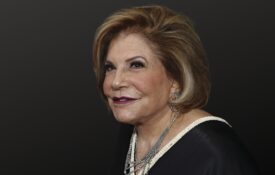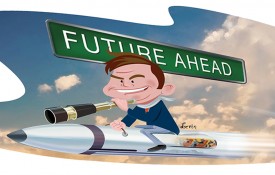In Los Angeles, there is a sport for everyone. Whether it be soccer players darting up and down the scenic Ferraro Fields that nestle in the shadow of Griffith Park, or rowers putting in a morning’s workout as the sun rises over the tranquil shores of Long Beach, countless athletes in Southern California commit themselves to the everyday pursuit of greatness.
Los Angeles is the premier Olympic City not only because of the two (and potentially a third in 2024) Olympic Games it has welcomed, nor because it is the home of the Los Angeles Memorial Coliseum and the LA84 Foundation. It is the Olympic City because of the thousands of Olympians who call Los Angeles home. Whether they be fifth-generation or first-generation citizens, it is these Angelenos who proudly serve as the embodiments of the Olympic Movement.
The tales of all of these world-class athletes would take years to tell. As Los Angeles continues to celebrate its unrivaled Olympic past and aim for greater heights, learn the history and meet the world-class athletes behind an acclaim more than a century in the making.
Long before the 1932 Olympic Games Opening Ceremonies saw over 100,000 people fill the LA Coliseum to welcome athletes from across the globe, Los Angeles found itself fertile soil for developing world-class athletes.
The 1900 Summer Games in Paris marked the first instance of Californians making their way onto the Olympic stage. Few were as true an Angeleno as Marion Jones Farquhar, a tennis star who became the first American woman to earn medal distinction. The first non-British woman to play at Wimbledon, Farquhar also happened to be the daughter of U.S. Senator and Santa Monica co-founder John Percival Jones.

Paralympian Candace Cable won 12 medals and was the first woman to win medals in both the Summer and Winter Paralympics
Four years later in St. Louis, University of Southern California (USC) student Emil Breitkreutz took home the bronze medal in the 800-meter race. Little did the world know that this engineering student was the first ripple in a tidal wave of USC and University of California, Los Angeles (UCLA) students who would challenge entire nations for medal supremacy in the years and Games to come.Eight years later, in 1912, USC freshman and 110-meter hurdler Fred Kelly crossed the finish line first at the Stockholm Summer Games to win the first gold medal for his Trojans. Kelly later became the first president of what later became known as the Southern California Olympians and Paralympians Association, the oldest and largest chapter in the United States.
In 1924, one of the most compelling encounters in Paris involved two Angelenos fighting for the boxing gold medal in the featherweight division. Jackie Fields bested Joe Salas, the United States’ first Latino Olympian, in a bout among close personal friends.
UCLA joined its crosstown rival atop the podium at the 1932 Games in Los Angeles, where the hometown Bruins collected 10 medals, 5 of them gold.
Since 1932, it has become a quadrennial rite of passage for the schools to triumph how the “Bruin Nation” or “Trojan Nation” stacks up with the competing countries at each Olympic Games. The two schools’ combined 30 medals at the 2016 Rio Summer Games would have placed them eighth among competing countries, while their combined 570 medals all-time is topped by only five nations. Elite athletes from across the globe seek out Los Angeles as a place to live and compete. At the Rio Games alone, Olympians from 26 countries represented the two schools.
The two schools’ combined 30 medals at the 2016 Rio Summer Games would have placed them eighth among competing countries, while their combined 570 medals all-time is topped by only five nations.
The 1932 Games put Los Angeles on the map as a hub for Olympic sport, and their conclusion saw many departing athletes vow to return. One of those competitors was Babe Didrikson Zaharias, a gold medalist in the javelin and 80-meter hurdles and silver medalist in the high jump. Zaharias was introduced to the sport of golf during the 1932 Games, took lessons in LA the next year, became the first woman to compete in a men’s tournament at the 1938 Los Angeles Open, and even opened a women’s sport clothing store in Beverly Hills.

Babe Didrikson
Zaharias (far right) won two gold medals at the 1932 Olympics before winning 10 LPGA major
championships
With top-notch facilities, coaching, and idyllic weather for year-round training, it comes as little surprise that world-class athletes, through school or other methods, continue to call Los Angeles home. A vast and diverse metropolis, Angelenos also aspire for Olympic Winter Games glory. World champion figure skater Michelle Kwan, eight-time Olympic medalist short track speedskater Apolo Ohno, and fellow short track world champion JR Celski are among the Winter Olympians who’ve called Los Angeles their home base.
Angeleno trailblazers continued to achie-ve following the success of the 1932 Summer Games. Local sprinter Mack Robinson, brother of baseball pioneer Jackie, ran alongside Jesse Owens en route to silver at the 1936 Berlin Games. Also participating in 1936 was legendary distance runner Louis Zamperini, a South Bay native whose story, which included drifting at sea for 47 days and surviving as a prisoner of war in the South Pacific during World War II, was celebrated in the book and movie Unbroken.
As the Olympics resumed in 1948, a pair of local divers overcame racial inequality to reach the pinnacle of their sport. Korean American diver Sammy Lee, who as a youth had a sand pit dug in his backyard since Asian Americans were not regularly allowed at the pool, brought home gold in London at the 1952 Helsinki Games. Lee later coached local prodigy Greg Louganis, who became a hometown hero after taking home a pair of individual golds at the 1984 Games in Los Angeles.

Apolo Ohno has won eight Olympic Medals
Lee was joined atop the diving world in 1948 by Vicki Manalo Draves, of Filipino descent, who became the first woman to win gold in the 10-meter platform and 3-meter springboard in a single Games. The second woman to achieve the double was Orange County native Pat McCormick, who achieved the feat twice, first at Helsinki in 1952 and again in Melbourne in 1956.
With warm weather and sunny skies (almost) year-round and the Pacific Ocean to the west and south, it’s only fitting that Los Angeles’ proclivity for aquatics manifests in Olympic dominance.
Local sensation John Naber won five medals, four of them gold, at Montreal in 1976. That same summer, close friend and eight-time medalist Shirley Babashoff anchored the United States 4×100-meter freestyle relay team to gold in a stunning upset of the East German side in what is still considered the greatest race in women’s swimming history.
Inspired by Naber, Babashoff, and the 1984 Olympic Games in her backyard, Janet Evans (p. 80) notched four gold medals in Seoul 1988 and Barcelona 1992. Soon after, Gary Hall Jr., an activist in the communities of Greater Santa Barbara, won 10 Olympic medals in Atlanta 1996, Sydney 2000, and Athens 2004.
Even if the sport is merely near the water, Angelenos know how to find Olympic glory. The beach volleyball duo of Kerri Walsh Jennings and Misty May-Treanor lived near and trained on the beaches of Los Angeles en route to three straight Olympic gold medals. The current coach of the US Women’s Volleyball Team, Karch Kiraly, won three gold medals total between indoor and beach volleyball.
It is the Olympic City because of the thousands of Olympians who call Los Angeles home. Whether they be fifth-generation or first-generation citizens, it is these Angelenos who proudly serve as the embodiments of the Olympic Movement.
Like the displays along Hollywood Boulevard, the light of Los Angeles’ Olympians star power never fades. Nine-time Paralympic Candace Cable is at the forefront of the adaptive sports movement, also serving as a vice chair on the LA 2024 bid committee. Along with Cable, Angeleno Olympians playing a leadership role in LA 2024 include Evans; 1976 Olympian, International Olympic Committee Executive Board member, and LA84 Foundation President Emeritus Anita DeFrantz; and four-time hockey medalist and fellow IOC member Angela Ruggiero.
Hop on a court and the accomplishments continue: Lisa Leslie, James Harden, Russell Westbrook, DeMar DeRozan, and Diana Taurasi are among the titans of the NBA and WNBA with an Olympic gold medal to their name and Southern California to call their home. The Williams sisters, Venus and Serena, learned the ins and outs of tennis while also growing up in Los Angeles.

Serena and Venus Williams grew up in Compton, California, starting to play tennis at the age of three
Head out on the track and you’ll find hundreds more Olympians who grew up or moved to Southern California and have an Olympic story to tell. Chief among those is the iconic Rafer Johnson, gold medalist in the 1960 Olympic decathlon in Rome and civic-minded activist who later founded Special Olympics Southern California.
On July 28, 1984, it was Johnson who lit the Olympic Cauldron during the Opening Ceremonies in front of an awestruck Coliseum crowd. In that moment, it was one Angeleno lifting 90,000 out of their seats and enrapturing billions around the world. Los Angeles, the Olympic City, hasn’t slowed down since.

Rafer Johnson












































